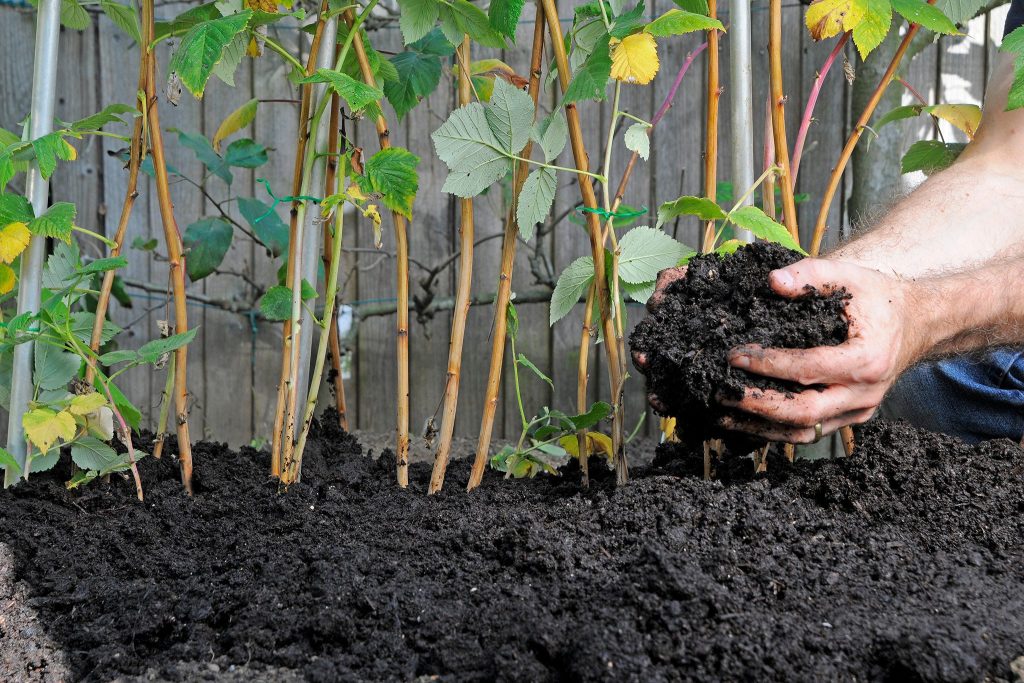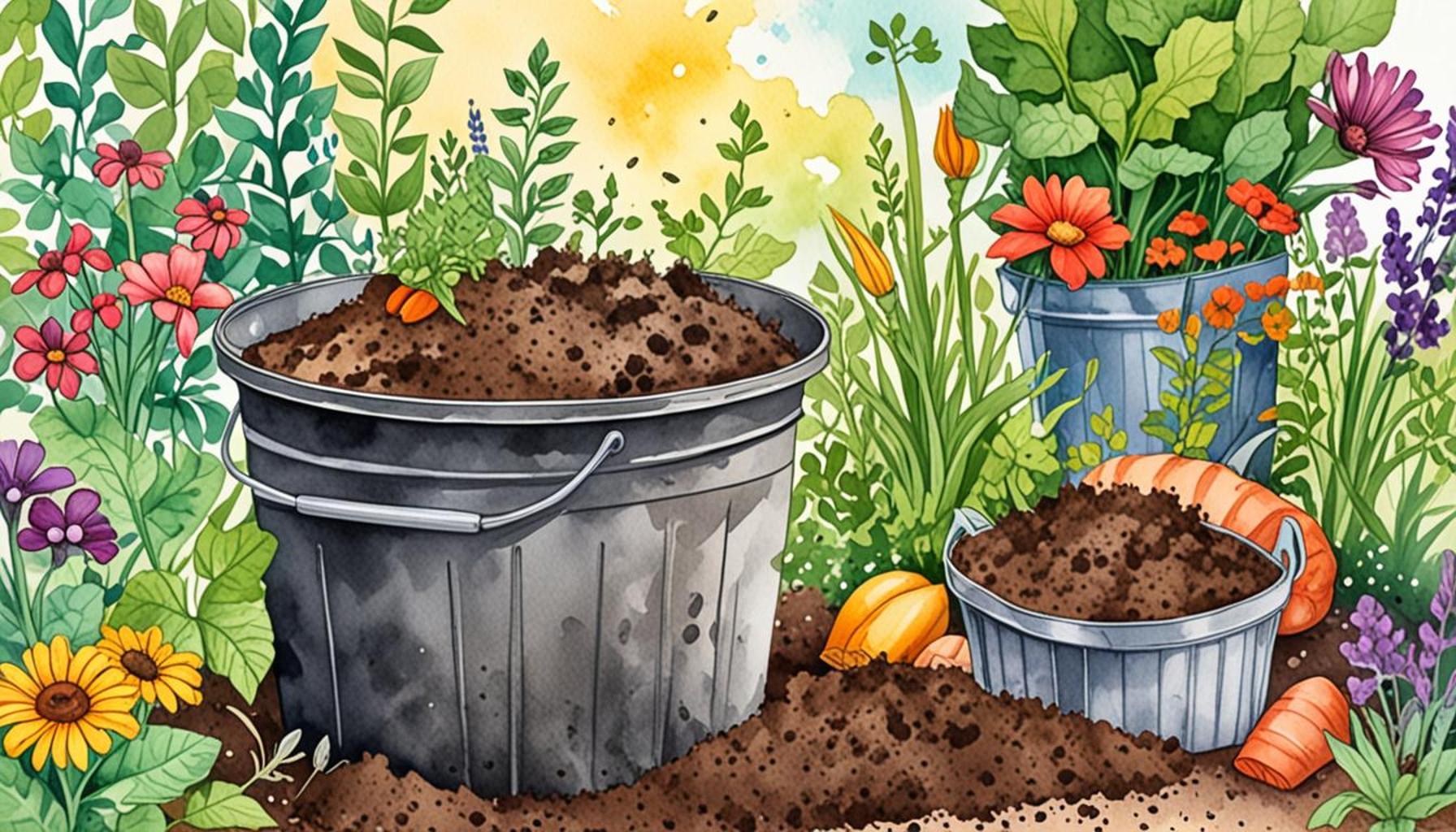Using Natural Materials to Create Healthy Soil: Tips for Beginners

Creating Healthy Soil Naturally
Healthy soil is the backbone of any garden or landscape. It supports plant life, fosters biodiversity, and plays a crucial role in water retention and nutrient cycling. As a beginner, tapping into natural materials can be your key to nurturing soil that thrives.
Why Focus on Natural Materials?
Using natural materials is not only environmentally friendly but also highly effective. Here are some benefits of opting for natural components:
- Rich in nutrients: Organic materials such as kitchen scraps, coffee grounds, and grass clippings break down to release essential nutrients for plants. Composting these materials can significantly increase the nutrient content and biological activity in your soil.
- Improves soil structure: Natural amendments like compost or well-rotted manure enhance drainage and aeration. This is crucial for preventing soil compaction, which can stifle root growth and reduce overall plant health.
- Supports microbial life: Healthy microbial communities contribute to soil vitality. Beneficial bacteria and fungi work symbiotically with plant roots, helping to decompose organic matter and making nutrients available to plants.
Getting Started
As a beginner, you might wonder where to begin with creating healthy soil. Consider these tips:
- Incorporate compost made from kitchen scraps and yard waste. You can create a compost bin in your backyard or use a worm bin to accelerate decomposition.
- Use mulch to retain moisture and suppress weeds. Organic mulches, such as shredded bark, straw, or grass clippings, not only protect the soil but also break down over time, enriching it further.
- Add natural amendments like peat moss, leaf mold, or aged manure to enrich your soil. These components improve moisture retention and provide a continuous source of nutrients as they decompose.
Moreover, engaging with your local extension service or gardening clubs can provide valuable insights and practical advice tailored to your region. This localized knowledge can help you understand what specific soil amendments may be needed based on local climate and soil conditions.
With a focus on sustainable practices, you can establish a thriving environment for your plants. Delving into the world of natural soil materials offers endless opportunities for learning and growth. Not only are you enhancing your gardening experience, but you are also contributing positively to the environment. Remember, the journey to healthy soil is a gradual process, but with patience and dedication, the results will be rewarding.

DISCOVER MORE: Click here to learn how to create your own vertical garden
Understanding Natural Soil Materials
When it comes to enhancing your garden, understanding the role of natural materials in soil health is crucial. These materials serve as the foundation for a thriving ecosystem that nurtures plants, supports microbial life, and improves soil structure. By incorporating the right components, even beginners can create a rich medium that promotes plant growth.
Key Natural Materials for Soil Health
There are several natural materials that can significantly benefit your soil quality. Each contributes unique properties that cater to the diverse needs of your garden:
- Compost: Often regarded as gardeners’ black gold, compost is made from decomposed organic matter. Whether it’s vegetable peelings, fruit skins, or yard waste, compost introduces a variety of nutrients into the soil, bolstering its fertility. Additionally, compost improves soil structure, allowing for better aeration and water retention.
- Manure: Well-rotted animal manure is a powerhouse of nutrients. Unlike fresh manure, which can be too potent and may carry pathogens, aged manure is safe to use. It enriches the soil with nitrogen, phosphorus, potassium, and trace minerals, making it an excellent natural fertilizer.
- Mulch: Organic mulches, such as grass clippings, straw, or shredded leaves, provide a protective layer over the soil. They can reduce moisture evaporation, suppress weed growth, and add organic matter as they decompose. Plus, the aesthetic appeal of mulch enhances your garden’s visual charm.
- Peat moss: Known for its ability to retain moisture, peat moss can be particularly beneficial in sandy soils. It improves soil crumb structure, making it easier for roots to penetrate, while also enhancing the overall nutrient-holding capacity of the soil.
- Bone meal: This natural fertilizer is an excellent source of phosphorus, which is vital for strong root development and flowering. When used in moderation, bone meal helps promote healthy plant growth from the very beginning.
Integrating these natural materials into your gardening routine not only enriches your soil but also aligns with sustainable practices. By understanding the characteristics and benefits of each material, you can tailor your approach to meet the specific needs of your plants.
The Role of Soil Testing
Before diving into soil amendments, consider performing a soil test. Many local agricultural extensions offer testing services that reveal the pH level and nutrient content of your soil. This information provides a clear picture of what amendments your soil may need, allowing you to make informed decisions. For example, if your soil test indicates high acidity, adding lime could help balance the pH, enhancing nutrient availability for your plants.
By harnessing the power of natural materials and understanding their unique contributions, you can create a healthy soil environment that lays the groundwork for a flourishing garden. The journey begins with thoughtful selection and application of these components, setting you on the path to gardening success.
| Category | Advantages |
|---|---|
| Organic Compost | Enhances soil structure, retains moisture, and provides rich nutrients essential for plant growth. |
| Mulching | Suppresses weeds, reduces soil erosion, and moderates soil temperature, creating a favorable environment for seedlings. |
| Cover Crops | Prevent nutrient leaching and improve soil fertility and structure, thus promoting healthy ecosystems. |
| Wood Chips | Slowly decompose to enrich soil and support beneficial microbial life while enhancing moisture retention. |
Using natural materials to create healthy soil is not just an eco-friendly choice; it’s a practical one for gardeners of all levels. Each element plays a crucial role in nurturing a sustainable gardening environment. For instance, organic compost provides a powerhouse of nutrients, creating a flourishing habitat for plants while improving soil structure. Mulching is another critical strategy that offers multiple benefits, from weed suppression to moisture control. Additionally, introducing cover crops can significantly enhance soil health, preventing nutrient depletion and fostering microbial activity.Using materials like wood chips not only contribute to soil enrichment but also establish a thriving ecosystem. Exploring these methods will empower you with the knowledge to cultivate a thriving garden while promoting soil health efficiently and sustainably. Integrating these practices into your gardening routine will transform your growing space. They foster resilience in ecosystems and improve plant vitality and yield.
DISCOVER MORE: Click here for natural solutions
Natural Practices for Soil Enrichment
Creating healthy soil goes beyond simply integrating natural materials; it also involves adopting practices that enhance the soil’s biological and physical properties. Beginners can easily implement these techniques to pave the way for a productive and sustainable garden.
Utilizing Cover Crops
One of the most effective yet often overlooked strategies for soil health is the use of cover crops. Plants like clover, vetch, and rye are planted during the off-season to prevent soil erosion and improve fertility. As these plants grow, they absorb nutrients, particularly nitrogen, and when tilled back into the soil, they release these nutrients, enriching the soil’s profile. Cover crops also improve soil structure by promoting aeration and increasing water infiltration rates, creating a perfect environment for your future crops.
Practicing Crop Rotation
Maintaining a diverse planting schedule can greatly benefit soil health. Crop rotation, which involves alternating the types of plants grown in a certain area year after year, helps prevent pest buildup and reduces soil depletion. For example, following a heavy feeder like tomatoes with a lighter feeder such as carrots allows the soil to recuperate naturally, ensuring an even distribution of nutrients. This practice not only sustains soil fertility but also lowers the reliance on chemical fertilizers.
The Power of Worms: Vermicomposting
For those looking to maximize their organic waste, vermicomposting represents a fun and rewarding technique. This process harnesses the natural decomposition abilities of earthworms to create nutrient-rich worm castings, which can be mixed into your soil. These castings are rich in minerals and beneficial bacteria that promote healthy plant growth. Vermicomposting is not only efficient but can also be conducted in small spaces, making it an excellent option for urban gardeners.
Incorporating Green Manures
Green manures are another great way to enhance soil health. Different from cover crops, green manures are planted primarily to be tilled back into the soil to boost organic matter content. Leguminous plants, such as peas or beans, in particular, fix atmospheric nitrogen into the soil, thus enriching it naturally. Tilling these crops into the ground before they flower will maximize their potential to enhance soil structure and fertility.
Maintaining Soil Moisture with Natural Techniques
To create a sustainable soil ecosystem, maintaining its moisture levels is crucial. Using methods like deep mulching not only conserves water but also encourages the growth of beneficial fungi and bacteria that contribute to a thriving soil environment. Additionally, implementing drip irrigation systems can be more effective than sprinklers in delivering water directly to the plant roots while minimizing evaporation.
With a focus on using natural materials and implementing organic practices, beginners can successfully create and maintain healthy soil that nurtures plants and protects the environment. As you explore these options, remember that healthy soil is the cornerstone of a thriving garden, continually seeking to enrich itself through organic means.
DISCOVER MORE: Click here to learn about common garden pests
Conclusion: The Foundation of Your Gardening Journey
In conclusion, crafting healthy soil using natural materials is an essential practice for any beginner gardener aiming for sustainability and productivity. As we’ve discussed, incorporating cover crops, practicing crop rotation, vermicomposting, and utilizing green manures are just a few of the many strategies available that can transform your soil into a thriving ecosystem. These methods not only enhance soil fertility but also foster biodiversity, creating a balanced environment that supports plant health.
Moreover, maintaining moisture levels with organic techniques ensures that your soil remains rich and vibrant throughout the growing seasons. As you embark on this rewarding journey, consider documenting your practices and outcomes; this not only helps you learn and adjust your methods over time but also connects you to a global community of like-minded gardeners who prioritize natural stewardship.
As we look at the bigger picture, investing time and energy into understanding soil health is investing in a sustainable future. When you nurture your soil, you not only cultivate a bountiful garden but also contribute positively to the environmental landscape. For those eager to dive deeper, resources abound—from local gardening clubs and workshops to online forums that celebrate organic practices. Remember, healthy soil is the foundation on which flourishing plants are built, and your hands can be the agents of this transformation.



